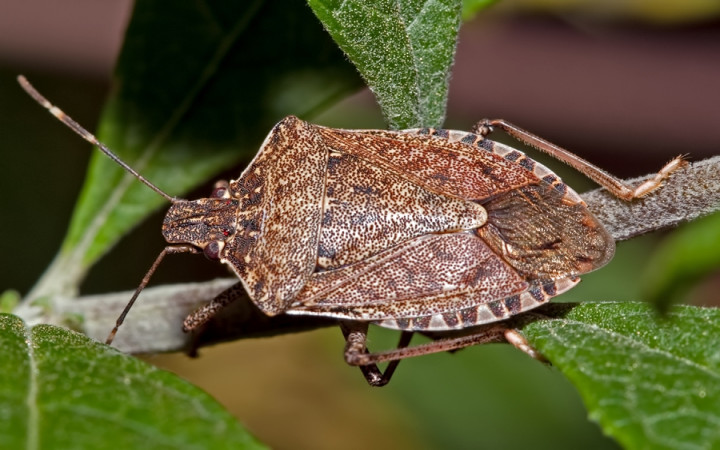Today’s Wonder of the Day was inspired by David. David Wonders, “Why do stink bugs stink?” Thanks for WONDERing with us, David!
Do you smell that? Wonderopolis has been invaded by small brown bugs. Can you help us get rid of them? Be careful, though. They’re a bit on the stinky side. What are we talking about? Stink bugs, of course!
Have you ever seen a stink bug before? They‘re part of the Pentatomidae insect family. The most common species is known as Halyomorpha halys, or the brown marmorated stink bug. “Marmorated" means that these bugs are often streaked like marble. As you might guess from the name, the bugs are usually brown. However, they often have white, black, gray or blue markings.
If you‘re not looking for the stink bugs, you might miss them! They‘re very small, only about half an inch long. They also have a very unique shape. They resemble small shields and are pretty easy to recognize when you see them.
Stink bugs are native to China, Japan, Korea, and Taiwan. How did they end up in Wonderopolis? The bugs were brought to the United States accidentally. They started popping up in the U.S. in the mid-1990s after traveling as stowaways in packing crates. Today, stink bugs appear across the United States.
So what’s so stinky about stink bugs? They release a gas that many people think smells like cilantro. The gas comes from stink glands on the underside of their bodies, between their first and second pair of legs. These glands release the odor as a defense mechanism. You’ll smell the odor if a stink bug feels threatened. It’s similar to how the skunk defends itself.
Besides stinking, stink bugs also pose big problems for farmers. They’re agricultural pests. While some insects – such as bees and the praying mantis – are helpful to farmers, stink bugs damage crops. They feed on a wide variety of fruits and vegetables as they grow. This includes apples, cherries, peaches, raspberries, pears, green beans, and soybeans.
When the growing season is over, stink bugs invade nearby homes. As the fall nights turn cool, they look for shelter in warm areas. When they get inside a house, they will usually hibernate to survive the winter. In the spring, many people notice stink bugs in their house. The insects are just waking up from their hibernation and will soon be on their way to nearby farms.
Are stink bugs dangerous to people? Normally, no! The worst most people have to fear is a bad stench from this bug. To avoid the worst, just avoid stink bugs when you see them. Getting too close could result in a very smelly situation.
Standards: NGSS.LS1.A, NGSS.LS4.B, CCRA.L.3, CCRA.L.6, CCRA.R.1, CCRA.R.2, CCRA.R.10, CCRA.SL.1, CCRA.SL.2, CCRA.W.2, CCRA.W.3, CCRA.W.9, CCRA.L.1, CCRA.L.2




